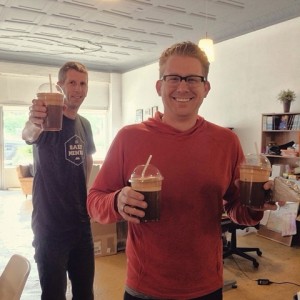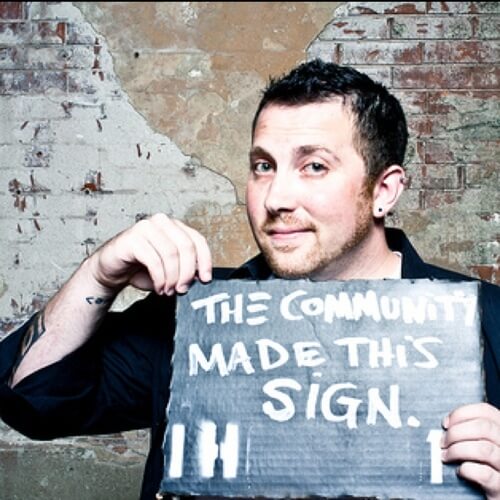I don’t often do guest posts on my blog. But after Andy Soell helped someone on the Coworking Google Group with some tremendously valuable advice, I had to ask him if he’d be willing to share that same advice here. I’m happy that he obliged.
Enjoy! -Alex
I have a special place in my heart for coworking space operators who have done it all wrong.
It’s a story that I’ve heard over and over since we opened our own space two years ago: “People just aren’t coming back. They stop in for a day and tell us how great it is, but then we never see them again.” They go on to describe how awkward it is, because when people do _stop in, it’s just two people—which makes it hard to give people that _feeling that coworking has. “How do we get people to sign up? How do we get them to form a community?”
This story really resonates with me because this is _exactly _where we were with The Salt Mines. We opened the doors to our space in 2012 with an awesome launch party and coverage from several local media outlets. We were _sure _that our space was going to be full within a month, and we would have to start looking for larger locations.
Four months later, we had a grand total of a dozen people who had visited our space. Some were semi-regulars, coming in once or twice a week, but the _vast _majority of them came in and worked for the day, never to be heard from again. On their way out they told us how great the space was and how much work they got done, but they still didn’t have the motivation to come back. Why not? _Because we didn’t give them a reason to come back. _We had desks and wifi and coffee, but they can get all of that at home.
What keeps people coming back, what makes them want to come in every day, is the people.
An ounce of prevention
If you’re reading this and you _haven’t _opened your space yet, let me save you a few months of heartache and give you some advice that I wish I had heeded: Build your community before you build your space.
I could go on and on about the importance of this, but Alex Hillman of Indy Hall (one of the oldest coworking communities in the country) has already outlined it better than I ever could. Believe me, I know: signing a lease and buying furniture and setting up a big beautiful space for people to work sounds like a _lot _of fun. And it will be. But build your community first, and then you can build the space together.
We started over with a new outlook
After four months of loneliness, we knew that we had to take some drastic steps to turn things around. We started by looking at our financial model, gutting it, and recreating it from the ground up. Then, we took steps to get as many people in the space as we could to give them a good look at what a coworking space filled with awesome people really looks like.
Problem #1: Our business model had incentives in all of the wrong places
In an effort to appear as flexible as possible, we had originally opened with a punch-card style payment system: Visitors paid for packs of days that could be used at their convenience and the more days they bought, the cheaper each day was. The problem we found with this approach was that it put the focus of the value of coworking on the price-per-day, and actually _discouraged _people from coming in.
We switched to a recurring monthly membership, asking members to sign up for a set number of days each week. This switched the emphasis to “do I really need to go in today?” to “if I don’t go in today, I won’t get the value I’m paying for.”
Problem #2: Getting over empty-room syndrome
This was a good first step, but we also needed to get a critical mass of four or five people who were tired of working alone in the space so they could see what working with other independents was like.
We set a date and launched a week-long membership drive with the stated goal of getting people in the space, committed to using it for a full week, and giving them a real coworking experience. We spent about two weeks promoting the week-long open house and building up anticipation. We were fortunate enough to get a little extra attention from the same media outlets that covered our launch, and we mobilized our Twitter and Facebook audience to spread the word: Free coworking—and free coffee—all week long!
We knew things were going to be different right on the first day. Several old familiar faces stopped in to give us another chance, but we were also joined by a crop of brand new people. People from every profession you can imagine. Teachers, non-profits, authors, journalists, students. We had more people in on that first day than we had in the four previous months.
And it worked
We blew through our first pot of coffee in an hour. People were talking with each other. People were getting work done. Even better than that, meaningful connections were being made. People who had never met were going out to lunch together and talking about potential collaborations.
The next day we saw about half of Monday’s crowd return along with a new batch of people interested in checking the space out. This was when we started emphasizing the most important part of our membership drive week: Signup specials.
We knew attendance that week was going to continue to be great, and we wanted to give our new prospective members a big incentive to continue to make us—and each other—part of their new daily routine, so we offered 50% off for the first six months. In an effort to encourage them to sign up quickly, we limited this special to the first three people to sign up at each level. This made the decision to continue with us a little easier to make and people responded quickly: on Tuesday, we signed up our first Full Time member.
The days that followed continued the trend: A sea of new and familiar faces. As we publicly welcomed new members who had signed up, others who had been thinking about joining signed up quickly so they wouldn’t miss out on the discounts.
By Friday evening we had a dozen committed people who had already been working alongside each other for a week and who were eager to keep working together and build a community of active independent professionals.
In the weeks that followed, we had a minimum daily attendance of four or five members. Not all of our founding members stuck around for the long-term, but in the year that has followed more than half of the original members are a still a core part of our community, and I can’t imagine working with a more incredible group of people.
It won’t be easy, but you can fix mistakes
Regrets are a funny thing: I love where our community is now, so I can’t say that I _regret _those first few months.
That said, I would absolutely do it very differently if I were doing it over again. Building the space before building the community is the biggest way to ensure a false-start, but if you find yourself with a big empty space, lots of pretty furniture and nobody to share it with, don’t give up hope.
Give people a glimpse of what it is that makes coworking so great, get them to commit to a window of time to see what working in community can be like, and they’ll never go back. It may take a sizable financial incentive to get them in, but once they’re on board and your community gains momentum you’ll never have to worry about being able to provide that taste to prospective members who walk through your door in the future.

 I am always thinking about the intersection of people, relationships, trust and business. I founded
I am always thinking about the intersection of people, relationships, trust and business. I founded